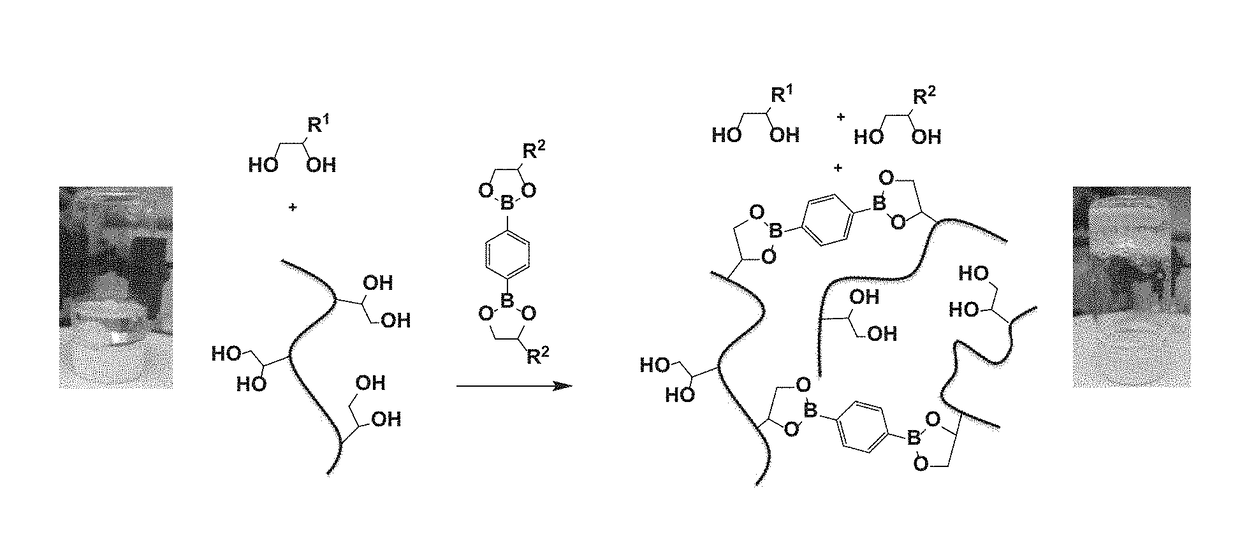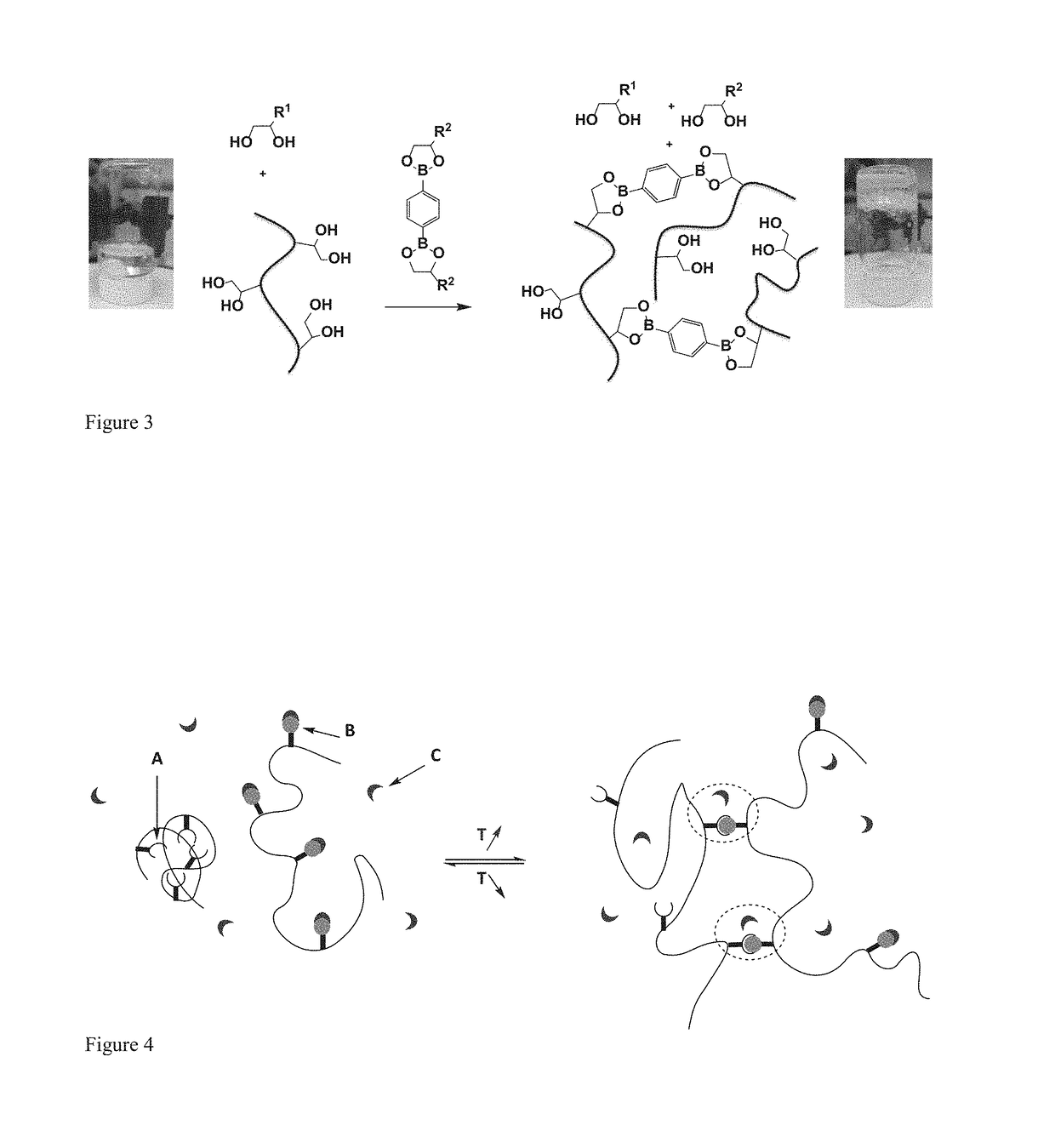Compositions of thermoassociative additives with controlled association and lubricant compositions containing them
a technology of additives and compositions, applied in the field of additive compositions, can solve the problems of reducing the thickening properties of polymers, reducing the resistance of high molecular weight polymers to permanent shear, and cleavage in macromolecular chains, so as to prevent the engine from turning quickly enough, prevent the effect of wear and reduce the temperature of the engin
- Summary
- Abstract
- Description
- Claims
- Application Information
AI Technical Summary
Benefits of technology
Problems solved by technology
Method used
Image
Examples
examples
[0440]The following examples illustrate but do not limit the invention.
1 Synthesis of Random Copolymers A1 Bearing Diol Functions
[0441]1.1: Starting from a Monomer Bearing a Diol Function Protected in the Form of Ketal
[0442]In an embodiment, the random copolymer A1 of the invention is obtained according to the following reaction diagram 10:
[0443]1.1.1 Synthesis of Monomer M1 Bearing a Diol Function Protected in the Form of Ketal
[0444]Synthesis of a methacrylate monomer bearing a diol function protected in the form of ketal is carried out in two steps (steps 1 and 2 of reaction diagram 10) according to the following protocol:
[0445]1st step:
[0446]42.1 g (314 mmol) of 1,2,6-hexanetriol (1,2,6-HexTri) is introduced into a 1 L flask. 5.88 g of molecular sieve (4 Å) is added, followed by 570 mL of acetone. 5.01 g (26.3 mmol) of para-toluenesulphonic acid (pTSA) is then added slowly. The reaction medium is stirred for 24 hours at ambient temperature. 4.48 g (53.3 mmol) of NaHCO3 is then a...
PUM
| Property | Measurement | Unit |
|---|---|---|
| Time | aaaaa | aaaaa |
| Fraction | aaaaa | aaaaa |
| Length | aaaaa | aaaaa |
Abstract
Description
Claims
Application Information
 Login to View More
Login to View More - R&D
- Intellectual Property
- Life Sciences
- Materials
- Tech Scout
- Unparalleled Data Quality
- Higher Quality Content
- 60% Fewer Hallucinations
Browse by: Latest US Patents, China's latest patents, Technical Efficacy Thesaurus, Application Domain, Technology Topic, Popular Technical Reports.
© 2025 PatSnap. All rights reserved.Legal|Privacy policy|Modern Slavery Act Transparency Statement|Sitemap|About US| Contact US: help@patsnap.com



